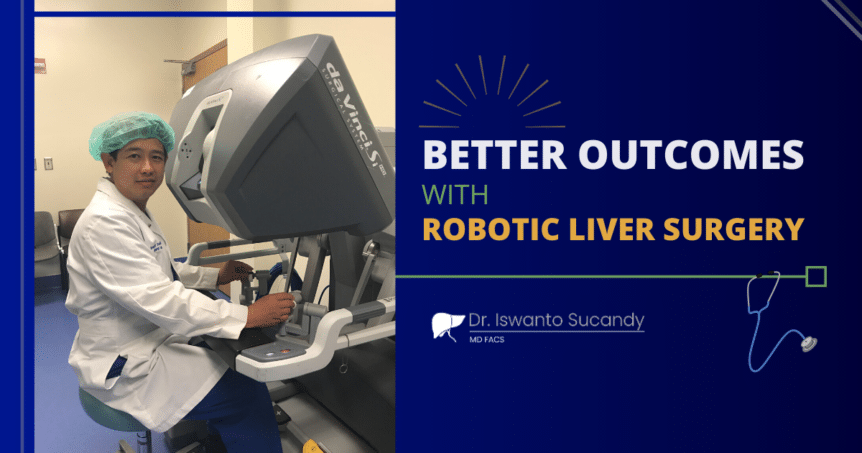
Dr. Sucandy Presented at Virtual SAGES (Society of American Gastrointestinal and Endoscopic Surgeons) 2020 Conference
At the annual meeting of the Society of American Gastrointestinal and Endoscopic Surgeons (SAGES), Dr Sucandy presented his technique in Robotic Liver Surgery with his Colleagues. The meeting was originally scheduled to be held in Cleveland Ohio but was later switched to Virtual platform due to Covid Pandemic.
Robotic Surgery for Non-Cancerous Liver Tumors
Dr. Sucandy gave a video presentation on “Robotic Total Left Hepatectomy for Large Liver Hemangioma.” A hemangioma is a benign (non-cancerous) tumor made up of blood vessels and fibrous tissue. In most patients, this condition does not need to be surgically treated, however in certain patients, surgical resection may be necessary. When hemangioma has reached a certain size (usually about 10 cm), it can lead to pain, discomfort or upper abdominal fullness. A large hemangioma can push on the stomach, small bowel, large bowel, major vessels, or the main bile duct. In this situation, robotic liver resection is the optimal way of achieving definitive treatment. Dr Sucandy’s patient had a 13 cm hemangioma causing significant upper abdominal pain. The robotic liver surgery technique was able to be applied to remove this giant hemangioma without complications. The patient did very well and his symptom complecalltoy resolved.
Robotic Surgery to Repair Bile Duct Injury After Gallbladder Surgery
Dr. Sucandy shared his technique about Robotic Roux-En-Y Hepaticojejunostomy for Right Hepatic Duct Transection. This is an unfortunate complication after gallbladder surgery. Dr. Sucandy reconstructed the duct so that bile could correctly flow from the liver into the small bowel. This way the patient can resume normal live without bile duct drainage problems.
Robotic Surgery for Metastasized Colon Cancer To The Liver
In his “Robotic Left Hepatectomy for Metastatic Colon Cancer” presentation, Dr. Sucandy showed how he removed a small 1.6 cm tumor from the liver, confirmed to be a colon cancer metastasis. This is a very common scenario where 50% of patients with colon/rectal cancer will have liver metastasis in the lifetime. In this operation, Dr. Sucandy partnered with his colorectal colleagues to use a combination of robotic colon and liver operation to remove both tumors. This is becoming the new preferred approach to serve patients who are diagnosed with colon cancer and liver metastasis to avoid two operations. By making it into a single operation, the patient’s recovery is much shorter and the initiation of postoperative chemotherapy can be much earlier as well.
Robotic Surgery for Metastatic Sarcoma Cancer to Adrenal Gland
In addition to performing hundreds of liver surgery, Dr Sucandy also performs other operation on a routine basis. One of them are adrenal surgery. Dr Sucandy resected an adrenal tumor from metastatic sarcoma (soft tissue cancer) from the patient’s arm. This is the only tumor and the patient is cured. Dr Sucandy shared the technical tips and tricks in performing adrenal surgery using the robotic surgical system. The outcomes are excellent and most patients can go home in about 2 days. This is also a major revolution in surgery where a major open incision associated with lots of potential complications can be avoided.

